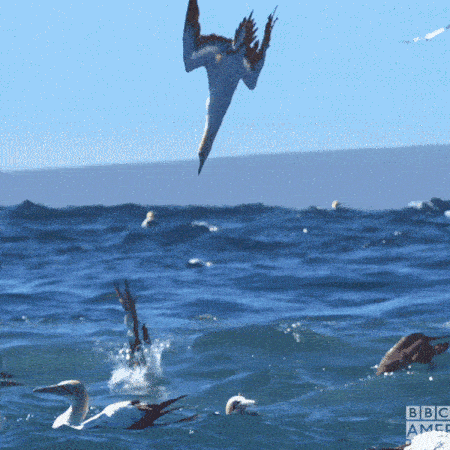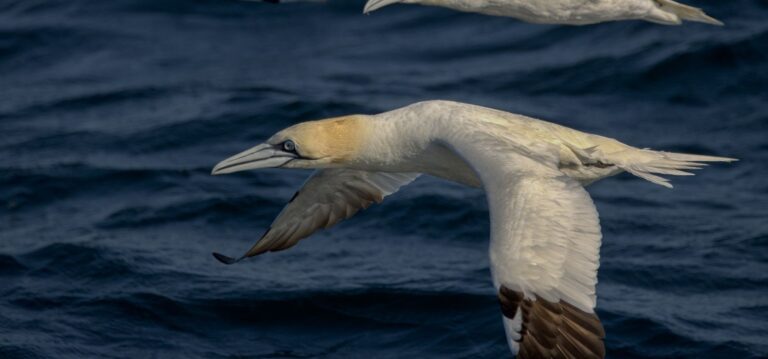Northern Gannets are one of the largest seabirds and unmistakeable when feeding, diving head first into the sea with their wings folded back, to catch fish.
The Northern Gannet can be easily identified by their bright white plumage with black wing tips and a yellow head. They are usually most noticeable when feeding as this seabird plummets from heights of up to 30 metres and reaches speeds of up to 60 mph before hitting the water! They are able to hit the water at these speeds without injury by an extensive network of air sacs between their muscles and skin, which helps to cushion the impact.
Although we see them frequently around our coast, gannets do not breed in Cornwall, and tend to migrate further north and settle to breed on the cliffs surrounding Scotland or further north towards Greenland. Our nearest breeding colony is off Wales’ Pembrokeshire coast. Younger, non-breeding individuals, can be seen off our coast at any time of year.
Share with a friend:

Northern gannets are expert divers and can plunge up to 30 metres underwater in search of fish.

Book a boat trip at pretty much anytime in the year and have a chance of seeing the Northern Gannet diving for fish around the coastline of Cornwall. A fun and safe way to see some amazing scenery and sealife. Our boat trips are a truly magical experience, especially with the amount of Cornish marine wildlife around our coastline.
Northern Gannets are large seabirds which belong to the Sulidae family, which also includes boobies, and are known for their white plumage, yellowish head, and long pointed wings.
Northern Gannets dive to catch the fish they feed on. Diving at speed from a height gives them more momentum to get deeper under the water in pursuit of fish.
They’re not typically aggressive towards humans, although they can become aggressive during breeding season to protect their nests.
Northern Gannets are protected in the UK under The Wildlife and Countryside Act 1981, protecting them, their nests, eggs and chicks from intentional harm.
As migratory birds they tend to breed in Winter, arriving at their colonies from January and leave in August but Non-breeding birds can be seen at any time around the Cornwall coast.
Northern Gannets hunt by plunging into the water from heights up to 30m to catch fish. They’re adapted for diving by having air sacs in their head and chest to help with compression as they impact the water.
Padstow Sealife Safaris give you the chance to get up close and personal with these fascinating creatures. Depending on the time of year that you choose to visit, you’ll have the chance to see a number of different species.